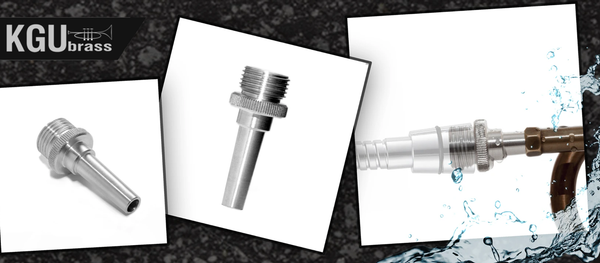Cleaning and maintaining brass instruments like trumpets and flugelhorns are fundamental tasks for musicians. It’s not about aesthetics – it’s about ensuring their longevity and preserving their distinct sound. In this article, we’ll offer trumpet and flugelhorn care tips on how to do it effectively.
The Importance of Cleaning Brass Instruments
It’s impossible to imagine crescendos of jazz or the beautiful solos in classical compositions without the presence of brass instruments. Their ability to produce a diverse range of tones breathes life into these musical masterpieces. When it comes to trumpets and flugelhorns, their true charm is not limited to shiny lacquer interiors, it resides within. If you desire to unlock the full potential of your musical instruments, it’s essential to keep them in optimal condition.
Here are three main reasons to clean your trumpet:
- Better Sound Quality
Brass instruments accumulate dirt, dust, and moisture over time, which can affect the quality of sound. Regular cleaning helps maintain the clarity of your instrument’s tone.
- Bacteria Control
Being in close contact with your lips, the mouthpieces can become a breeding ground for bacteria. Regular cleaning ensures a safe playing experience, especially if you share the instrument with others.
- Extended lifespan
Well-maintained instruments last for generations. Cleaning helps remove corrosive elements and prevents damage, saving money on repairs.
How to Clean Your Trumpet and Flugelhorn?
Cleaning comes in a few stages:
Gathering Your Supplies
For a cleaning purpose, you need a lukewarm water, mild dish soap, a soft cloth, a cleaning snake/brush, valve oil, and slide grease.
Disassemble the Instrument
Carefully disassemble your instrument to clean all the components. Remove the mouthpiece, slides, and valves.
Cleaning the Mouthpiece
Soak the mouthpiece in warm, soapy water for a few minutes. Use a mouthpiece brush to scrub the inside, and a soft cloth for the exterior. Rinse it thoroughly and dry it before putting on the instrument.
Cleaning Trumpet and Flugelhorn Valves
Clean each valve with a valve brush or snake. Apply a small amount of valve oil before reassembling.
Cleaning the Slides
Remove the tuning slides and clean them using warm, soapy water. Apply slide grease sparingly when reassembling.
Cleaning the Exterior
Wipe down the exterior of the instrument with a soft cloth to remove fingerprints and smudges.
Final Check
After you have reassembled your instrument, play it to check for any changes in sound. If everything sounds as it should, your cleaning has been successful.
Useful Accessories for Quick Cleaning
Mind that there are tools and accessories that can save your time while delivering stunning cleaning results. You can find them in cleaning & care section on KGUmusic website.
If you’re looking to efficiently remove dirt and small particles from the inside of your instrument, consider using an Aqua Nozzle. These cleaning accessories are not only easy to use but also yield excellent results. The process is straightforward: connect the Aqua Nozzle to a shower or garden hose, then insert the nozzle into the instrument’s lead pipe, and turn on the water.
A care towel, crafted from a soft material, helps to remove moisture, fingerprints, and debris without scratching your instrument’s glossy finish. After a practice session or a prolonged performance, a quick wipe-down with a care towel maintains the instrument’s visual appeal and ensures that it stays in optimal playing condition.
How often should You Clean?
The frequency of cleaning depends on how often you play your trumpet and the environment in which you store it. Here is the quick cleaning and maintenance guide for flugelhorns and trumpets:
- Clean the mouthpiece and exterior regularly, after every practice session.
- Perform a thorough cleaning of the entire instrument every few months or at least once a season.
Final Point
Brass instrument hygiene is essential for preserving the quality of the music they produce and extending their longevity. Regular maintenance routine and cleaning are important to prevent corrosion, reduce the risk of the growth of bacteria, potential damage to components, and costly repairs.





 https://kgumusic.com/pages/about-us
https://kgumusic.com/pages/about-us